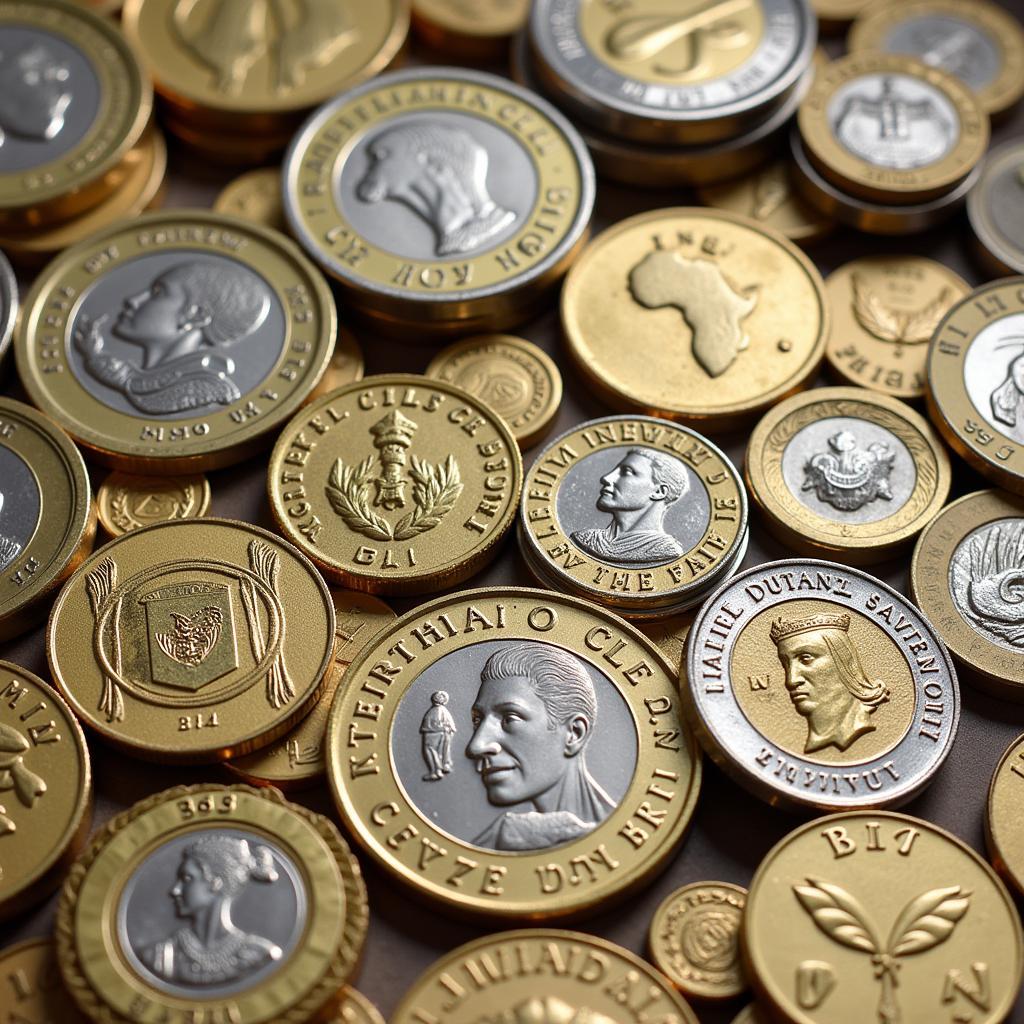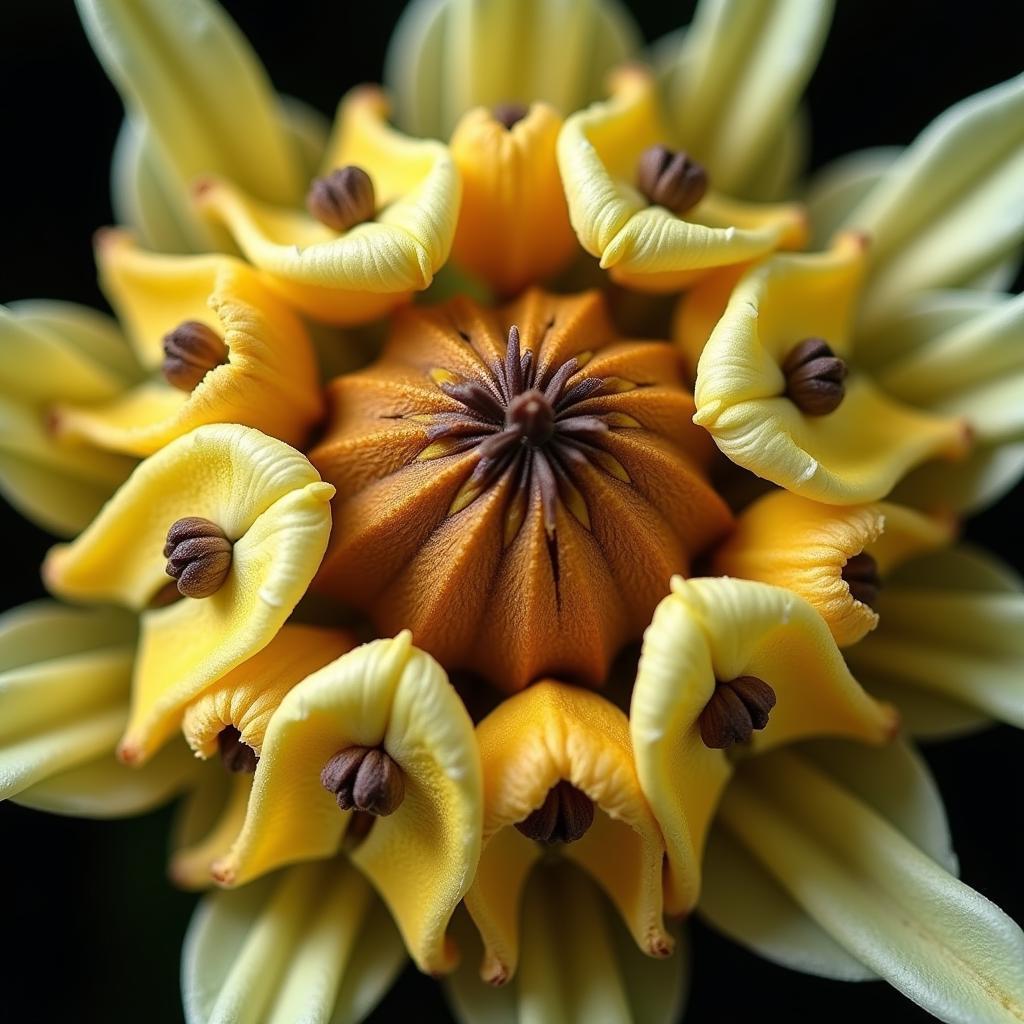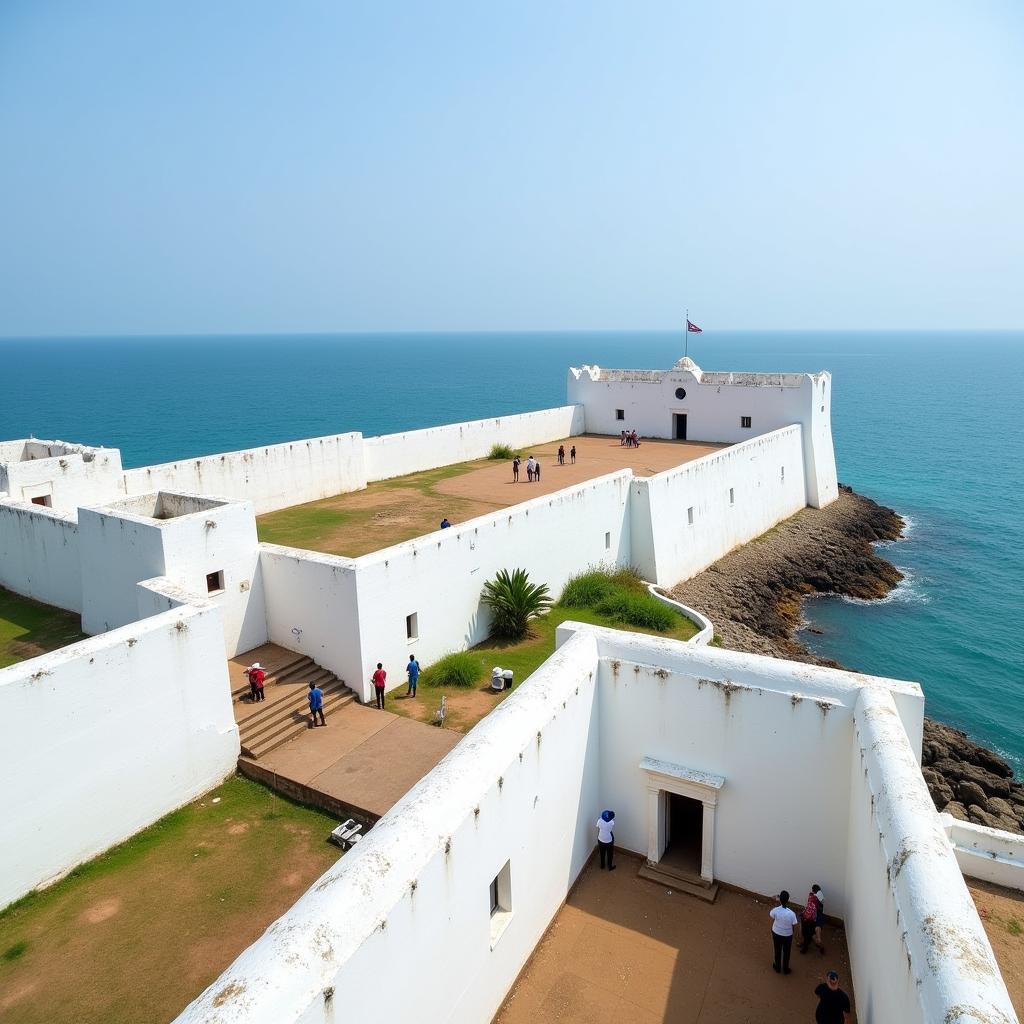Exploring the Diversity of African Currency Coins
African Currency Coins offer a fascinating glimpse into the continent’s rich history, diverse cultures, and evolving economies. From pre-colonial cowrie shells to modern commemorative coins, the numismatic landscape of Africa tells a compelling story. This article delves into the intricate world of African currency coins, exploring their designs, materials, and significance.
A Journey Through Time: From Cowrie Shells to Modern Mintages
Before the introduction of standardized currencies, various forms of trade existed across Africa. Cowrie shells, for instance, served as a prominent form of currency in many regions, highlighting the resourcefulness and adaptability of pre-colonial economies. The arrival of European powers brought with it new monetary systems, often reflecting the colonial influence. However, as African nations gained independence, they began to mint their own coins, incorporating national symbols, wildlife, and historical figures that reflected their unique identities. This transition from cowrie shells to modern mintages represents a significant shift in African economic history. The introduction of african coins and currency marked a new era.
The Significance of Coin Designs: National Symbols and Cultural Motifs
African currency coins are more than just tokens of exchange; they are miniature works of art that encapsulate national pride and cultural heritage. Many coins feature national emblems, such as the coat of arms, flags, or important landmarks. Others depict native wildlife, showcasing the continent’s incredible biodiversity. These designs serve not only as identifiers of the issuing nation but also as educational tools, promoting awareness of national symbols and cultural values. For example, some coins portray historical figures, commemorating their contributions to the nation’s development.
Materials and Minting: From Base Metals to Precious Metals
The materials used in African currency coins vary widely, reflecting the economic realities and resources of each nation. While many coins are made from base metals like nickel, copper, and aluminum, some countries utilize precious metals like silver and gold for commemorative coins or higher denominations. This diversity in materials reflects the range of economic conditions across the continent. The minting processes also vary, with some countries having their own mints while others outsource production to international facilities. This intricate process of creating african gold coin is a testament to the craftsmanship involved.
What are some common denominations of African coins?
Common denominations vary across countries, typically ranging from cents to larger units of currency.
How are African currency coins collected and valued?
Collectors consider factors like rarity, condition, historical significance, and metal content when valuing coins.
African Currency Coins: A Reflection of Economic Realities
The evolution of African currency coins reflects the changing economic landscape of the continent. From the early days of bartering to the adoption of modern monetary systems, coins have played a vital role in facilitating trade and economic growth. The fluctuating values of African currencies, influenced by global market forces, are often reflected in the materials and designs of the coins themselves. The study of african currency naira provides insight into the Nigerian economy.
 West African CFA Franc coins in various denominations
West African CFA Franc coins in various denominations
“The designs on African coins tell stories of resilience, cultural pride, and economic progress,” notes Dr. Abeni Okoye, a renowned historian specializing in African numismatics. “These small pieces of metal hold within them a wealth of information about the continent’s past, present, and future.”
The Future of African Currency Coins in a Digital Age
In an increasingly digital world, the future of physical currency, including coins, is a topic of much discussion. While digital transactions are gaining popularity, coins still hold relevance, particularly in informal economies and regions with limited access to technology. The transition towards digital currencies presents both challenges and opportunities for African nations.
“The shift towards digital finance offers exciting possibilities for financial inclusion and economic growth in Africa,” observes Dr. Kwame Asante, a leading economist specializing in African financial markets. “However, it’s crucial to ensure a smooth transition that addresses the needs of all segments of the population.” The imagery of african currency pictures plays a crucial role in understanding the different monetary systems. The iconic african currency icon is instantly recognizable.
Conclusion
African currency coins represent a tangible link to the continent’s rich history and diverse cultures. From pre-colonial cowrie shells to modern mintages, these small pieces of metal offer a fascinating glimpse into the economic and cultural evolution of African nations. As the world moves towards digitalization, the future of African currency coins remains to be seen, but their historical and cultural significance will undoubtedly endure.
FAQ
-
What is the oldest form of currency used in Africa?
Cowrie shells were among the earliest forms of currency used in various parts of Africa. -
Do all African countries have their own mints?
Not all African countries have their own mints; some outsource production to international facilities. -
Where can I learn more about collecting African coins?
Numismatic societies and online forums dedicated to African coins are excellent resources for collectors. -
Are there any rare or valuable African coins?
Yes, certain rare or historically significant African coins can be quite valuable to collectors. -
What is the future of African currency in a digital age?
While digital transactions are on the rise, physical currency still plays a role, especially in areas with limited digital access. The future likely involves a blend of both physical and digital forms. -
What are some key design elements found on African coins?
Many African coins feature national emblems, wildlife, and prominent historical figures. -
How do economic fluctuations impact African currency coins?
Economic changes can influence the materials used and the value of African currency coins.
If you need any support, please contact us at Phone: +255768904061, Email: [email protected] or visit us at Mbarali DC Mawindi, Kangaga, Tanzania. We have a 24/7 customer support team.


